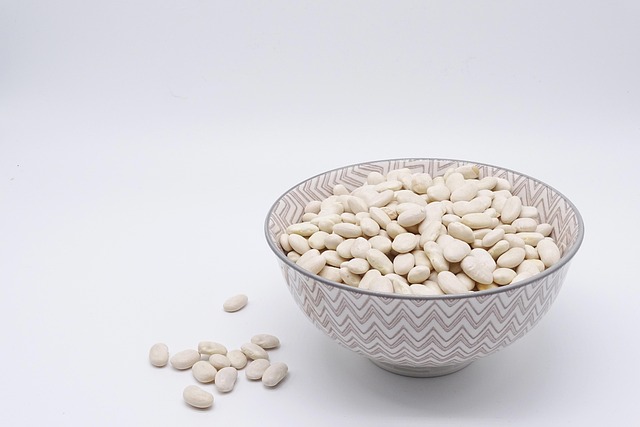Hydration habits paired with meals for better digestion in different climates
Adjusting how much and when you drink with meals can support digestion across warm, temperate, and cool climates. This article outlines practical hydration patterns paired with mealplanning and mealprep strategies, highlights the roles of fiber, portioning, and micronutrients, and suggests climate-aware tips for plantbased and omnivorous eaters.

This article explores how hydration habits paired with meals influence digestion in different climates, with practical guidance for mealplanning and mealprep. It covers how fluid timing, fiber-rich wholefoods, portioning, and mindful snacking interact with satiety and metabolism and offers climate-specific considerations — from hot, humid conditions to cooler environments — to help maintain comfortable digestion and nutrient absorption.
This article is for informational purposes only and should not be considered medical advice. Please consult a qualified healthcare professional for personalized guidance and treatment.
How does hydration affect digestion and metabolism?
Drinking fluids supports the transport of nutrients and the movement of digested material through the gut; hydration status influences metabolism and the sensation of satiety. In warmer climates people commonly lose more water through sweat, which can reduce saliva and alter digestive comfort. Sipping water throughout the day, rather than consuming large volumes only at mealtimes, helps maintain steady digestion and can prevent post-meal bloating for many individuals. Hydration also helps soluble fiber form gel-like substances that slow digestion and stabilize the glycemicindex of meals, supporting steadier energy release.
How to pair hydration with mealplanning and mealprep?
When planning meals and grocerylists, factor in the water content of foods: soups, stews, and many fruits and vegetables add significant hydration. For mealprep, include hydrating wholefoods such as cucumbers, tomatoes, melons, and cooked grains that retain moisture. Aim to have a glass of water or a modest portion of fluid 15–30 minutes before eating to support salivation and swallowing. During mealplanning, balance beverage timing with portioning—large volumes right at the start of a heavy meal may increase satiety and reduce overall intake, useful for some but uncomfortable for others.
What role does fiber, wholefoods, and satiety play?
Fiber from wholefoods—both soluble and insoluble—affects digestion and feelings of fullness. Soluble fiber absorbs water and slows gastric emptying, which can moderate blood glucose response and extend satiety after meals. Insoluble fiber contributes bulk and supports regular bowel movements. In various climates, prioritize fiber sources that are seasonally available and hydrating: for example, in hot weather, include hydrating fruits with fiber; in cooler climates, opt for cooked legumes and whole grains. Gradual increases in fiber paired with adequate hydration reduce the risk of discomfort during digestion.
How do portioning, glycemicindex, and micronutrients matter?
Portioning influences digestive workload and metabolic response. Larger portions require more digestive effort and can feel heavier in hot conditions when appetite may be reduced. Combining lower-glycemicindex carbohydrates with protein, healthy fats, and liquids can yield smoother digestion and more even energy. Micronutrients such as magnesium and potassium support fluid balance and muscle function in the gut; include a variety of vegetables, nuts, legumes, and wholefoods in grocerylists and meals to maintain these nutrients. In climates where sweat losses are higher, choose foods and drinks that help replenish electrolytes without excess sugar.
How to adapt plantbased and snacking habits in various climates?
Plantbased meals often deliver high fiber and water content, which can be particularly helpful in warm weather to support hydration and digestion. When snacking, select options that contribute fluids and micronutrients—yogurt, cut fruit, hummus with vegetables, or a small salad—rather than only dry, high-salt snacks that may increase thirst. In cooler climates, warm snacks and beverages can support comfort and encourage fluid intake when thirst signals are blunted. Tailor snack frequency and composition through mealplanning and mealprep so that snacks maintain steady energy and digestion without disrupting main meals.
How to use labelreading and grocerylists for better digestion?
Labelreading helps spot fiber content, added sugars, sodium, and portion sizes; these factors influence hydration needs and digestive comfort. When compiling grocerylists, prioritize wholefoods and minimally processed items with clear ingredient lists and meaningful fiber and micronutrient content. For example, choose whole-grain options over refined ones to improve satiety and slow carbohydrate absorption. In areas with limited seasonal produce, frozen fruits and vegetables can be a reliable option that preserves nutrients and water content for easier mealprep.
Conclusion Balanced hydration with thoughtfully planned meals supports digestion across climates by maintaining fluid balance, aiding fiber function, and moderating satiety and metabolic responses. Adjust beverage timing, include hydrating wholefoods, and tailor portioning and snacking to local conditions and personal comfort. Careful labelreading and well-organized grocerylists and mealprep can make these adjustments practical in daily life.





